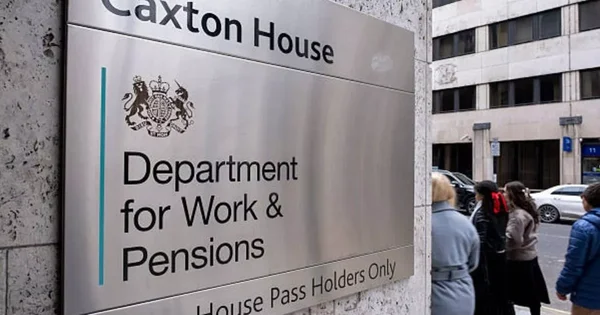
HMRC is taking a tougher stance on undeclared dividend income by cross-referencing company records with self-assessment tax returns. The goal? To identify individuals, especially directors and shareholders, who may be under-reporting what they receive from their companies.
This latest move is part of HMRC’s wider strategy to close the tax gap by using data more effectively, and it could impact thousands of small business owners and company directors in the UK.
Dividend income must be declared as part of an individual’s self-assessment tax return. However, HMRC suspects a significant number of individuals either omit this income or understate it. Using its powerful data-matching tools, HMRC can now compare Companies House filings and corporation tax returns with personal tax submissions.
If there’s a discrepancy, say, if a company has declared dividend distributions that its shareholders haven’t reported, HMRC is likely to raise an enquiry or issue a nudge letter.
As the 31 January deadline for the 2024/25 self-assessment looms, taxpayers are being advised to double-check their dividend records before submitting their returns. Getting it wrong could mean fines, backdated tax bills, and interest charges.
What Triggered HMRC’s Dividend Crackdown?
This initiative stems from growing concerns at HMRC that individuals are not reporting their dividend income accurately. With digital integration between Companies House and HMRC’s internal systems, the tax authority is better equipped than ever to catch inconsistencies.
A particular area of focus is owner-managed businesses, where directors may pay themselves a small salary and supplement it with dividends. While this is a common and tax-efficient strategy, failing to declare these dividends accurately can raise red flags.
HMRC’s recent campaigns have shown an increasing reliance on data-matching and predictive algorithms. The aim is to automate the detection of mismatches, especially those involving financial distributions like dividends.
How Does HMRC Identify Undeclared Dividend Income?
HMRC compares several data points to identify gaps. These include:
- Dividend payments recorded in a company’s annual accounts.
- Confirmation statements filed with Companies House.
- Corporation tax returns that outline distributed profits.
- Personal tax returns filed by directors and shareholders.
When dividend payments appear in company filings but are missing from shareholders’ self-assessment returns, HMRC may send an enquiry letter. These “nudge” letters often prompt the taxpayer to either update their tax return or provide supporting evidence.
Taxpayers who ignore such letters could face penalties or a formal investigation.
Who Is Most at Risk?
Sole directors, family-run businesses, and SMEs that pay out dividends frequently are at particular risk. If dividends are paid informally without proper documentation, or if company accounts are not kept in sync with personal tax filings, these individuals could be targeted.
Even if the omission was unintentional, HMRC can backdate investigations for up to four years, or 20 years in cases of deliberate evasion. This could lead to large bills and interest on unpaid tax. Tax advisers are urging clients to review their dividend income now rather than wait for an HMRC nudge.

What Should You Do Before the Self-Assessment Deadline?
To avoid penalties, individuals should:
- Cross-check company records with personal tax returns.
- Ensure dividend vouchers or minutes of dividend declarations are retained.
- Work with accountants to reconcile what has been declared in company filings versus personal filings.
If you realise you’ve underreported dividend income in previous years, you can amend your self-assessment up to 12 months after the deadline. Voluntarily correcting mistakes could also reduce any potential penalties. Those unsure about their records should seek professional advice as soon as possible.
The Broader Impact on Taxpayers and Companies
This enforcement move is part of HMRC’s broader trend of leveraging data to improve compliance. Similar tactics are already being used to track rental income, crypto gains, and overseas assets.
While the intention is to recover lost tax revenue, it also creates additional compliance pressure on small business owners who often juggle limited time and resources. Tax advisers say this underlines the importance of integrated record-keeping and timely reporting, especially for those managing multiple income streams.
Expert Opinions and Industry Reactions
Tax professionals are cautiously optimistic about the use of data to enforce compliance, provided it’s done fairly.
“HMRC’s data-matching is incredibly powerful,” said Richard Morley, tax partner at BDO. “But there’s a real risk of innocent errors being penalised harshly if people aren’t given the chance to respond or correct.” Industry groups have called for clearer guidance on dividend record-keeping and a more supportive approach to first-time errors.

Conclusion
As HMRC increases scrutiny on dividend declarations, self-employed individuals, company directors, and shareholders must remain vigilant. The ease with which HMRC can now compare data across platforms leaves little room for error or omission.
With the 2024–25 self-assessment deadline fast approaching, reviewing and, if necessary, correcting dividend income records should be a top priority. Those who act early can avoid fines, interest, and unnecessary stress.
This clampdown is a timely reminder that while tax efficiency is encouraged, transparency and compliance must come first. If in doubt, seek advice because when it comes to tax returns, silence isn’t golden, and omissions can be costly.
Frequently Asked Questions
What counts as dividend income for tax purposes?
Dividend income includes payments made to shareholders from a company’s post-tax profits. This includes both interim and final dividends.
Do I need to declare dividends even if they’re small?
Yes. All dividend income must be reported, even if it's below the tax-free Dividend Allowance (£500 for 2024/25). It's still part of your total income.
What is the deadline for amending a tax return?
You can amend a self-assessment return up to 12 months after the original filing deadline. So for the 2023–24 return due 31 January 2025, you have until 31 January 2026 to amend.
What should I do if I realise I missed declaring dividends?
Amend your return as soon as possible or disclose via HMRC’s Digital Disclosure Service. Voluntary disclosures typically attract lower penalties.
Can HMRC penalise unintentional mistakes?
Yes, but penalties are often reduced or waived if the error was genuine and corrected promptly. Deliberate evasion, however, leads to harsher consequences.









